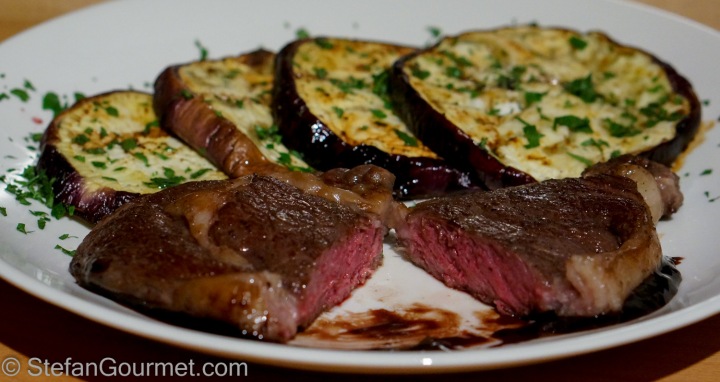
Bison is not usually available around here, so when I saw a bison ribeye I picked it up at once. Great meat like that needs very little, so I decided to only ‘warm age’ it sous-vide, and then quickly pan sear it. As a side I roasted some pink eggplant. It was very simple, but absolutely delicious. You don’t need a sous-vide cooker to prepare this, so read on!
‘Warm aging‘ is a term that I made up for meat that has been aged at the optimal temperatures for the enzymes that do the aging. The usual types of aging are cryovac or wet aging (vacuum sealed at refrigerator temperatures) or dry aging (at refrigerator temperatures). Both will tenderize the meat, dry aging will also add flavor if done long enough. At refrigerator temperatures the enzymes responsible for the tenderizing work very slowly, which is why aging at such temperatures takes weeks. Just below 40ºC/104ºF and 50ºC/122ºF, the calpain and cathepsin enzymes will work much faster. The meat can only be held at such temperatures for a couple of hours. You can think of it as bringing the meat to room temperature in a very warm room 😉 After that, a quick sear in very hot clarified butter will make the steak perfectly medium rare from edge to edge, very tender, and very juicy. As you can see in the picture, the meat is medium rare right to the very edge.
If you don’t have a sous-vide cooker but do have a vacuum sealer (or ziploc pouches and apply the water displacement method), you can obtain a very similar result by heating water to 40ºC/104ºF, turning off the heat, submering the steak in the warm water and covering the pot. After an hour add enough boiling water to raise the temperature to 50ºC/122ºF. The water will cool off a little bit of course, but that will only slow down the warm aging process a little bit as the enzymes will still work (remember, they will even work, very slowly, at refrigerator temperatures). You should use an accurate thermometer, because the enzymes will stop working above the above mentioned temperatures.
Ingredients
salt and freshly ground black pepper
clarified butter
red wine
bison stock or beef stock
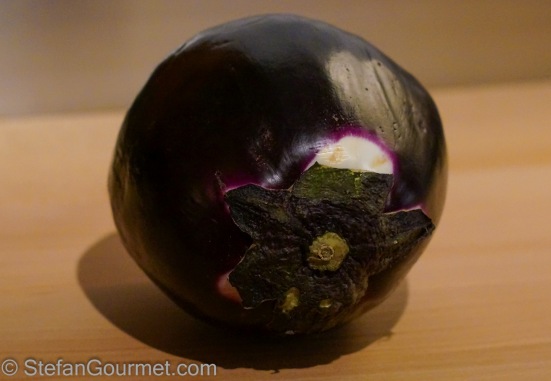
eggplant, preferably pink eggplant as it has a more delicate flavor and texture
salt
olive oil
freshly ground black pepper
minced parsley
Preparation
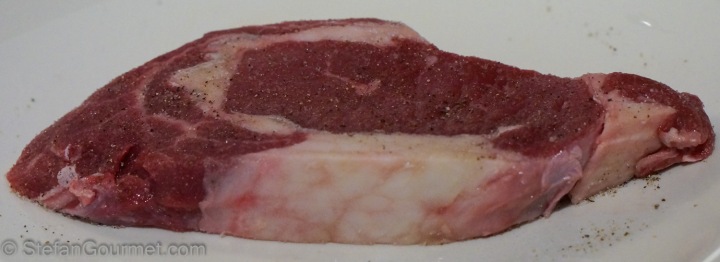
Season the bison ribeye with salt and freshly ground black pepper.
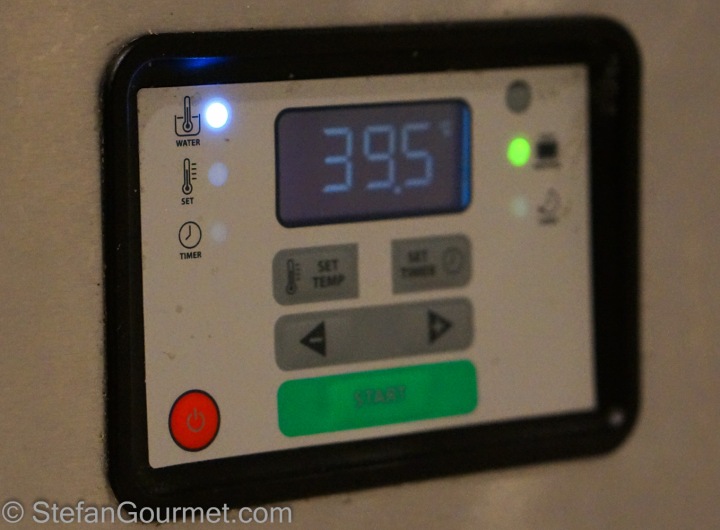
Cook sous-vide for 1 hour at 39.5ºC/103ºF. Then raise the temperature to 49.5ºC/121ºF and cook for another hour.
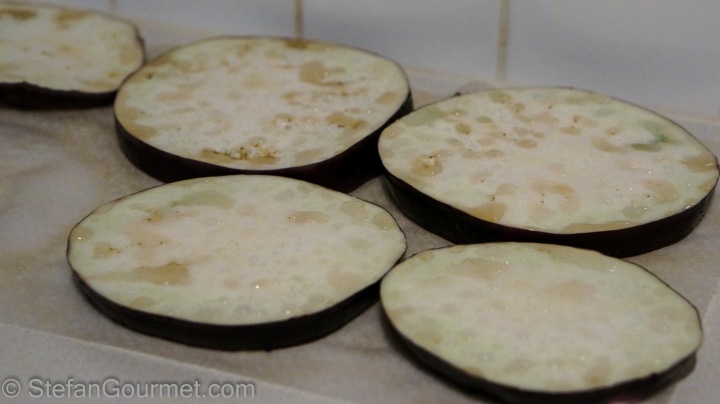
Meanwhile, slice the eggplant into 1 cm (1/2 inch) slices and generously sprinkle with salt. Wait for 30-45 minutes to allow the salt to extract the juices.
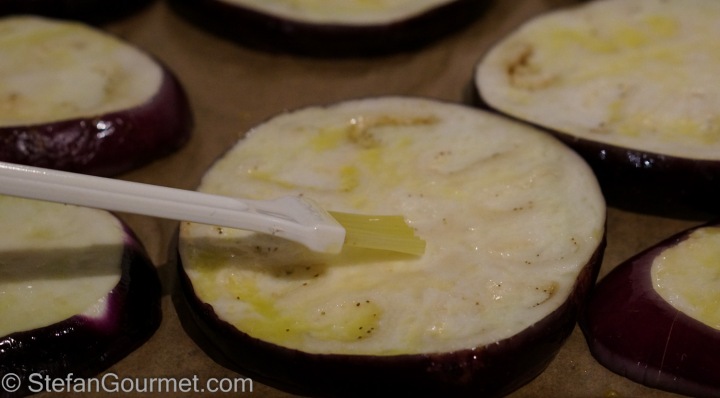
Preheat the oven to 225ºC/440ºF. Wipe off the salty juices with paper towels. Brush the eggplant slices with olive oil on all sides.
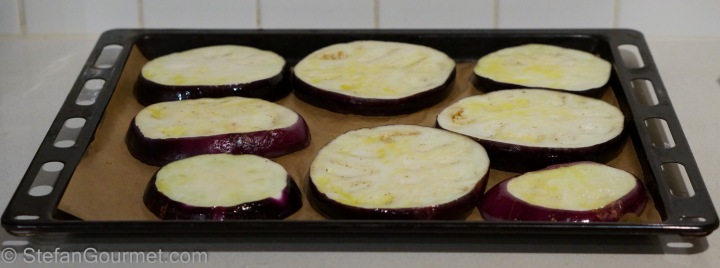
Arrange the eggplant on a baking sheet lined with parchment paper.
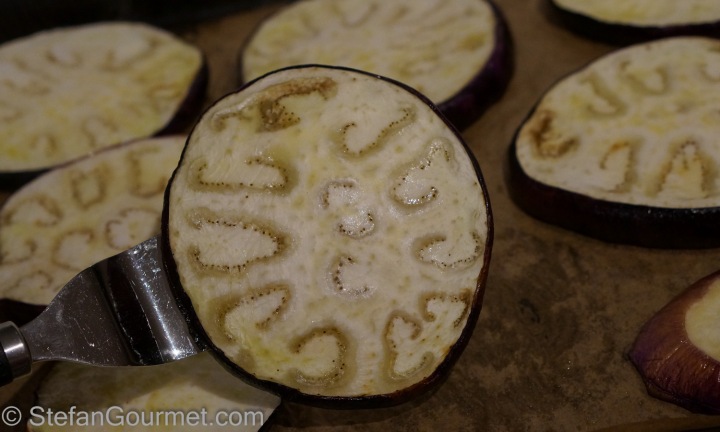
Roast at 225ºC/440ºF for 15 minutes or until slightly golden. Flip the eggplant slices.

Roast for another 10 to 15 minutes, or until nicely golden on both sides and tender inside.

The bison ribeye will only have lost a minimal amount of juices during the warm aging in the sous-vide cooker.
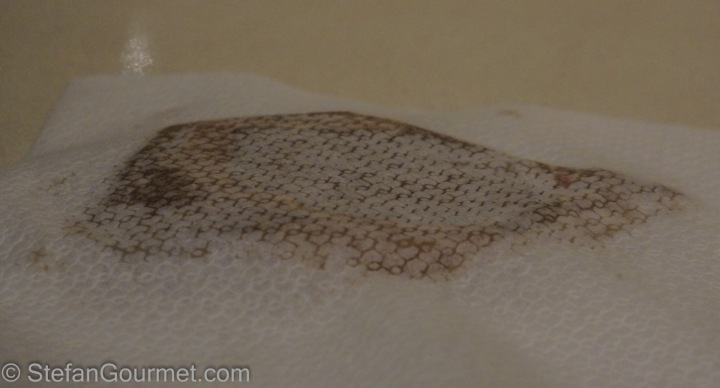
Pat the steak dry with paper towels. A dry steak is important for good browning!
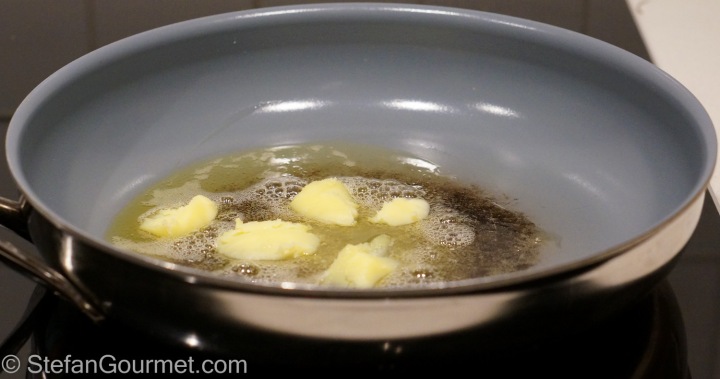
Melt some clarified butter in a frying pan and make sure the pan is very hot. Clarified butter doesn’t burn like regular butter, and it provides better browning than oil. As an alternative you could also use rendered bison fat or beef fat.
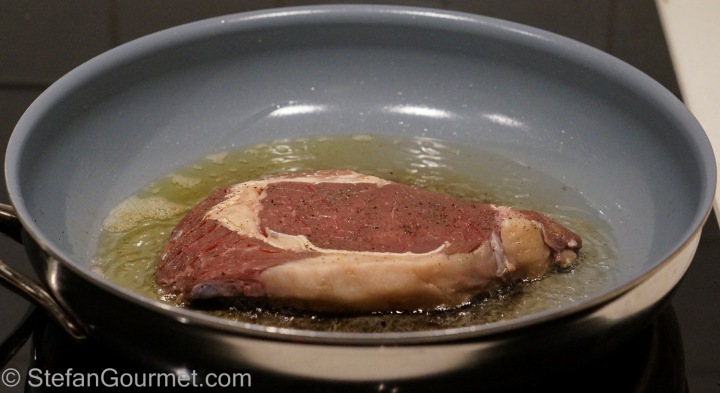
Add the bison steak when the butter is very hot.
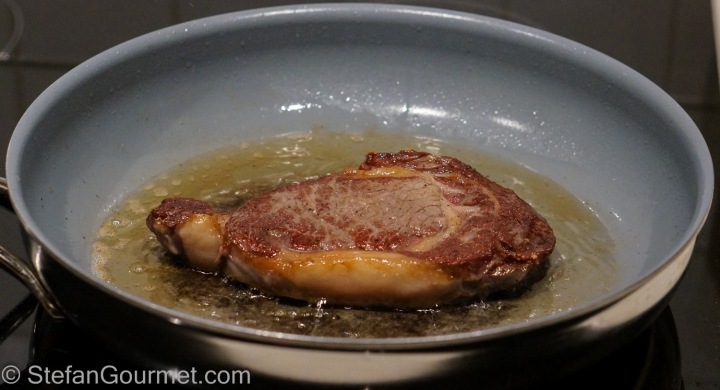
As soon as the steak is nicely browned, after two minutes or so, turn it over to brown the other side as well for a minute or two.
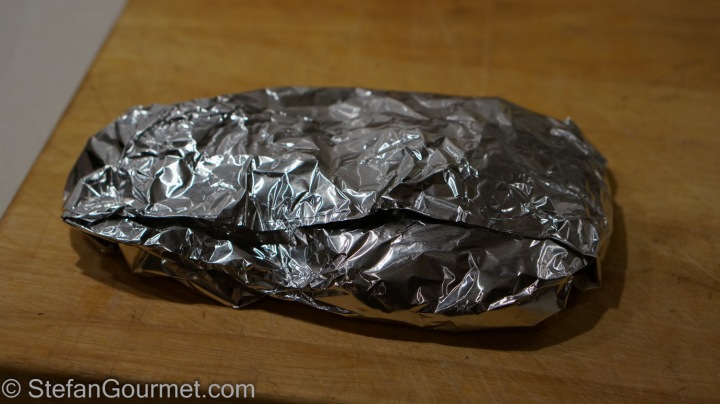
Wrap the steak in aluminum foil and allow to rest for 5 to 10 minutes. This will bring the center of the steak to about 55ºC/131ºF, i.e. medium rare. You could also tent it with foil if a crispy steak is important to you.
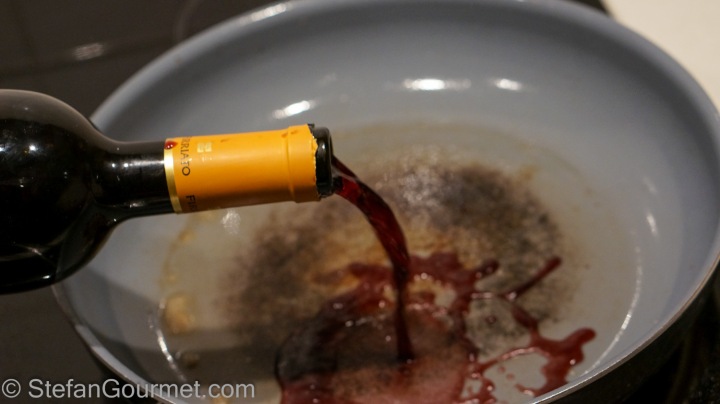
Meanwhile, deglaze the pan with some red wine. It is always a good idea to use the wine you will be drinking with the dish.

Add some bison stock or beef stock as well.

Reduce over medium heat, stirring, to create a simple sauce.
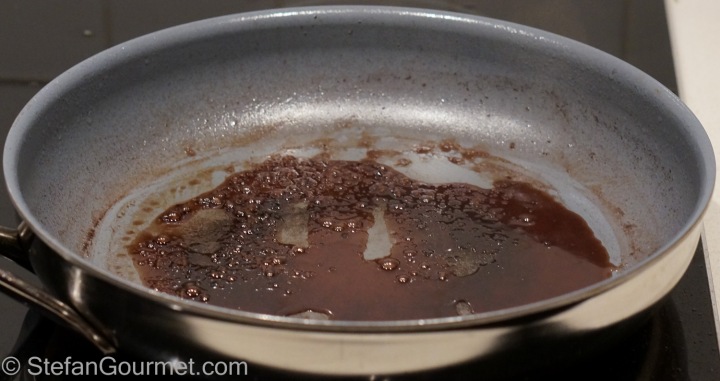
Continue to reduce until the sauce is syrupy.
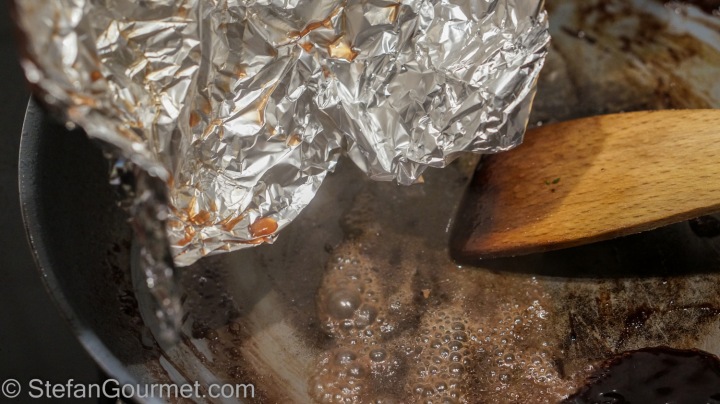
The bison steak will have leaked some juices that you can add to the sauce. Stir quickly over medium heat to incorporate in the sauce.
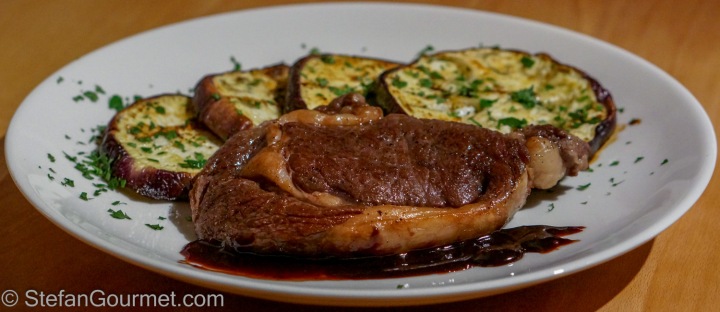
If you timed everything perfectly, the eggplant is now ready to be served. Serve the bison ribeye on warm plates with the sauce and the eggplant. Season the eggplant with freshly ground black pepper (it is already salty), sprinkle with minced parsley and drizzle with a bit of good extra virgin olive oil.
Wine pairing
We enjoyed this with a Nero d’Avola from Sicily, a Firriato “Harmonium” 2008. This powerful red was a great match for the bison ribeye. I wish I had bought more bottles of it.
Flashback
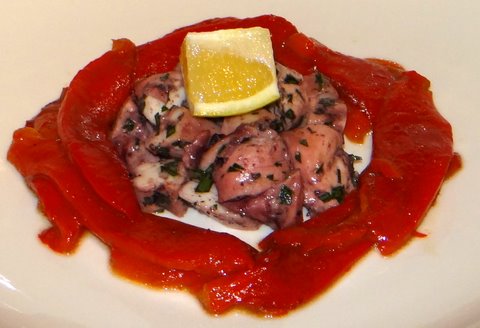
Two years ago I blogged about octopus sous-vide, served cold with roasted peppers. It’s a lot more delicious than this photo suggests.
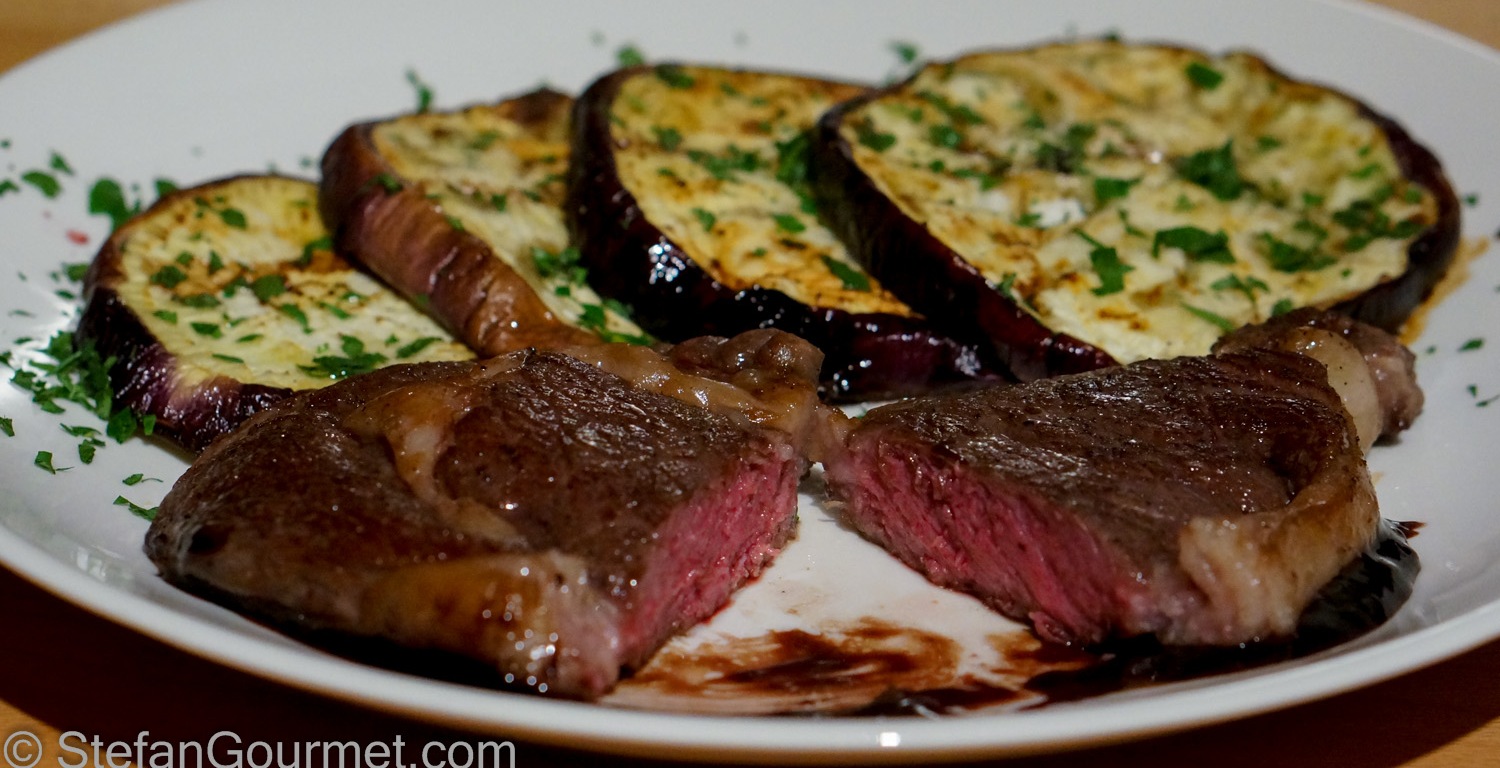
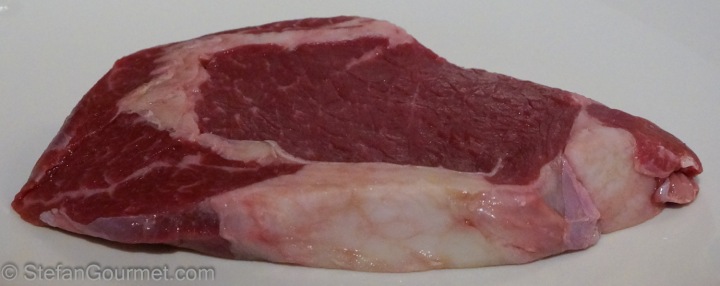
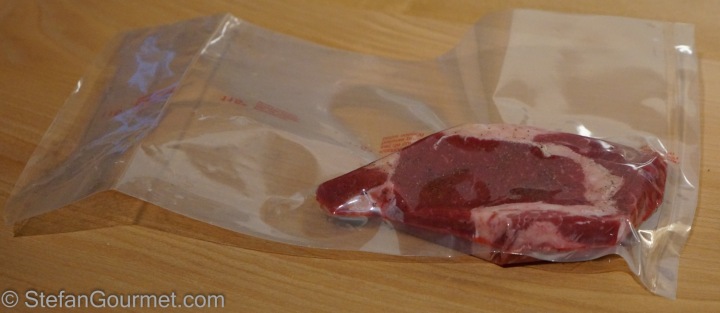

I’ve seen bison on a few restaurant menus but only when there was some other dish I wanted instead. I’m going to have to try it…. The eggplant makes a very attractive ‘side’ 🙂
LikeLike
It’s quite tasty, that’s why they were almost hunted to extinction in the 1800s.
LikeLike
Thanks for sharing all your great tips here! I hope the next steak I make will look as good as yours.
LikeLike
It should if you follow the tips. Let me know if you have any questions!
LikeLike
What does bison taste like?
LikeLike
Hi Maisa, thanks for visiting. Bison is similar to beef, but a bit like venison as well.
LikeLike
Bison rib eye is the best! Of course, I love eggplant. 🙂 Looks great, Stefan.
LikeLike
Thanks, Shanna.
LikeLike
molto interessante questa ricetta e ottimo l’abbinamento con il Nero d’Avola…gran vino
LikeLike
Bison is a new one on me. Something to look out for.
LikeLike
It is nice, a bit in between venison and beef.
LikeLike
so it happens they have bison in vancouver, they have ostrich in vancouver, pretty much anything. I will be seeking out some good bison steaks and get to work. Your paragraph on aging is very interesting. The dish looks delicious!
LikeLike
With the immersion circulator you’re all set 🙂 It’s also great for regular beef ribeye.
LikeLike
Well done….we can get bison, but for some reason haven’t tried sous-vide. Since bison dries out easily, this would be the best approach…will try it out.
LikeLike
You are right that sous-vide is a good approach to avoid dried out meat. Let me know how it turns out!
LikeLike
Hi Stefan
I used this recipe for cooking times for the bison ribeye and they were spot on. I wish I could’ve tried the entire recipe, but I ended up making the ribeye and finishing it in butter and smearing on some garlic butter on it. It was perfectly cooked and delicious. Thanks for sharing.
LikeLiked by 1 person